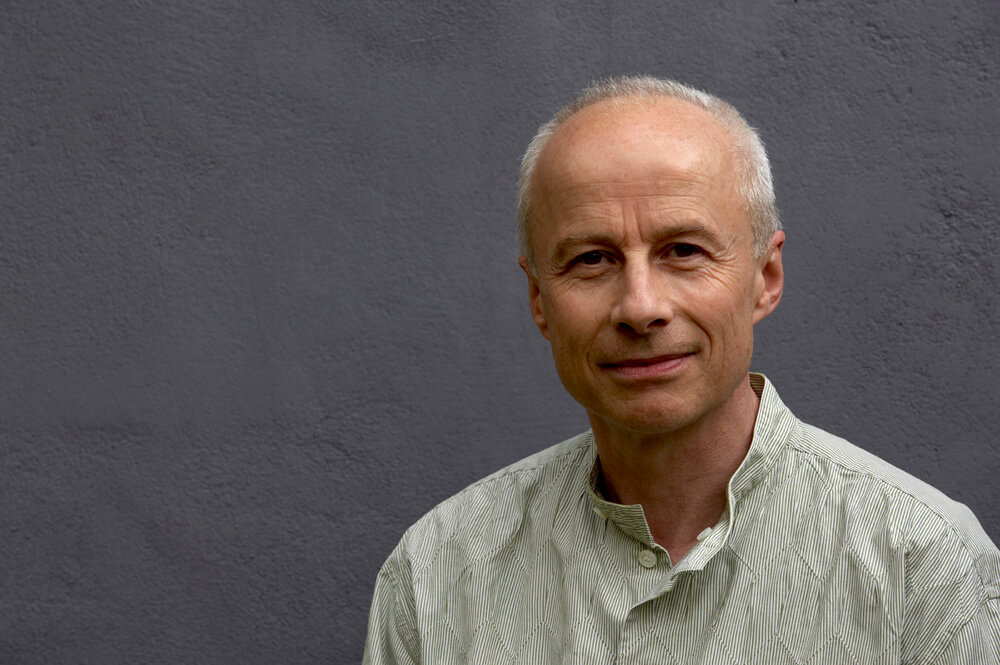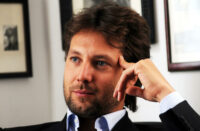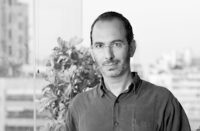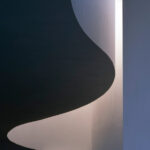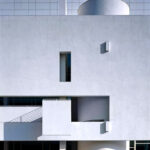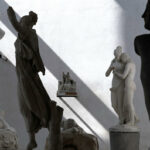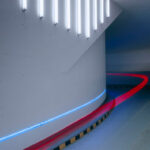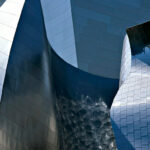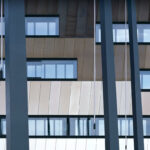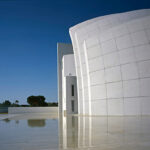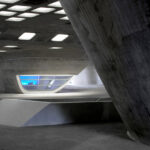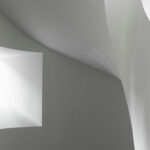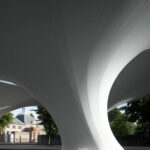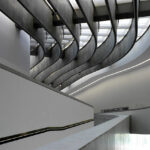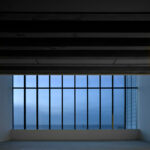ArchiTravel interviews the architectural photographer Richard Bryant.
Interview by : Alexios Vandoros
Alexios Vandoros: What is the importance of architectural tourism?
Richard Bryant: Architectural tourism is one of the big growth areas in the travel business. Of course this has existed since the wealthy of Europe began their “Grand Tours” in the nineteenth century. Later Egyptian artefacts, Greek ruins, churches and cathedrals became the focus of attention, but more recently with explosion of gallery and museum building, art has become the new attraction.
The more specialised architectural tourist may well research particular buildings of a favourite architect and travel with the primary purpose of seeing those examples. Many people now like to take a weekend “city break” to enjoy the cultural and architectural highlights of especially major European cities. This gives pleasure to a huge number of people and can only widen the knowledge and interest of the general public in this area.
A.V.: What is the importance of travelling, especially for architects and humans in general?
R.B.: I am not convinced that travelling is essential for most people, especially bearing in mind ecological factors. I personally caught the bug a long time ago and can therefore not in all fairness discourage others. I can remember at Architecture School visiting buildings around Europe and finding it so absorbing and addictive that I continually asked myself, “how can I make a living travelling and experiencing great architecture?”
It seems I have found a way. Only by living and breathing architecture can I truly feel the experience of a building. Experiencing other cultures, food and attitudes are essential. When I have a gap between projects I experience withdrawal symptoms and count the days until my next trip.
A.V.: What do you think is the added value that architecture creates within a city?
R.B.: Where do you draw the line between building and architecture?
Visual interest, texture, scale, sense of place are all part of the experience. If people imagines favourite cities they will always include these characteristics, maybe punctuated by key buildings new or old.
Without architecture a city is nothing. Architecture is the stuff of cities. The very essence.
When people have gone, structures remain. The buildings/architecture of today are creating the visual history for tomorrow.
A.V.: What is the importance of architectural events worldwide? What are the profits for a city holding such kind of major events?
R.B.: Worldwide publicity; Influx of tourism and all that that brings with it. Encouraging a dialogue giving an opportunity to discuss new ideas between the public and architects.
The Venice Architectural Biennale and the London Architecture Week have become incredibly successful attractions.
A.V.: What is your relationship with architecture? What attracted you to architecture, as a photographer?
R.B.: My first love was photography, but then I went on to study architecture as a career.
After working as an architect for a couple of years, the combination of photography and architecture became inevitable and allowed me to fulfil my two great pleasures combined.
A.V.: We can say that most of architecture photos of buildings do not include any people. What are your thoughts about including people in your photos? Is it important to photograph a building in use, or by itself?
R.B.: I much prefer to photograph a building in use and populated.
It is frequently the circumstances and not choice that dictates whether a location is photographed without people. Most photographs of buildings are devoid of life for several reasons.
Firstly, the requirement for photographs by the building clients/architects are often before the building is open and occupied and secondly there may be technical reasons of slow shutter speeds, etc which make it difficult to include people.
A third possibility is that people do not always want to be photographed and are therefore not co-operative in this regard.
A.V.: What have been your most exciting and challenging architecture photography projects?
R.B.: I have been fortunate. I have sought out and enjoyed the diversity of architecture and design in many forms. The list is too long to mention, but some of the highlights date back to repeated visits to The Staatsgalerie in Stuttgart for my favourite client of that time, James Stirling. He was a great man and loved photography of his buildings.
I was picked up by New York House and Garden who sent me all over the world to photograph so many projects. Houses in Australia, Mexico, Europe and the greatest challenge, The Frick Collection in New York. The shoot was a great success and we flew back on Concord.
I have worked with Armani on the Teatro Armani in Milan; Superstore in Hong Kong; Armani apartments in the Burg Khalifa in Dubai and his own residence in Pantelleria. Co-operation with Zaha Hadid resulted in great experiences in Rome for the MAXXI and a commission to interpret the latest modernisation of the Savoy Hotel in London.
A.V.: Many architecture theorists and a lot of people think that contemporary architecture is designed in order to be well photographed. Doing this work, do you have this feeling of buildings that are not designed to serve specific needs but are rather iconic and self-promoting?
R.B.: This is such a difficult question. Although one cannot be sure, in all cases there is a feeling that this can happen, although I think very rarely.
It is especially noticeable that when some particular architect with strong philosophical arguments which produce powerful iconic buildings there is then an avalanche of weaker, but similar designs.
Less talented designers beguiled by the techniques and styles often plagiarising an aesthetic in an inappropriate way.
On the other hand, has it ever been different? Before photography we saw the buildings as the architects wanted them to be portrayed via their drawing or romanticised paintings with the same results.
A.V.: Most of architects worldwide share the passion of photography for various reasons. At the same time, they usually photograph their projects on their own. What special skills and equipment would you say are required for architectural photography? How do architecture photographers do better this kind of work?
R.B.: There is a particular talent for architectural photography that includes not only an awareness of space and form, but the ability to translate these characteristics through the medium of photography. Knowing how the camera distorts space and accentuates form is essential so that the story of a building can be interpreted. Types of specialist cameras with movements to change perspective and planes of focus allow for greater creativity, but a talented and sensitive photographer can produce wonderful images with whatever equipment is at their disposal.
For me it is my interpretation of the relationships of form, light and atmosphere and to do justice to a building it is also about telling the story. Some photographers can take good graphic images but they do not relate spaces. A flaw often compounded by the choice of images selected for publication.
A.V.: What is the difference between seeing a picture of a building or a place and visiting the building or place yourself? How does architectural photography explore the relationship between the perception of space and the experience of space?
R.B.: There is a fundamental difference. All the senses are engaged when travelling and visiting a building. The smells, sounds, feel of textures, all add to the experience. A camera, even in the most skilled hands, can only allude to the experience of physically visiting a building.
The camera never tells the truth. All images of architecture will only give the viewer an intriguing glimpse of reality. Photography is after all only a two dimensional medium, interpreting a three dimensional space or form. A good photographer may get closer to the reality but it is still a personal interpretation and should be accepted as such. Unfortunately, many photographers will go for the dramatic image, using excessively wide angle lenses which distort the scale of a building or interior just for the effect and this may bear no relationship to reality.
A photograph can create interest and it can raise awareness of a place. It focuses on a specific time, from a specific viewpoint which may never be repeated. It is a memory trigger for a visitor after the event.
A.V.: At the end, can you please provide your personal proposal for 10 buildings (or places) which you think as the most important worldwide that someone must visit anyway?
R.B.: There are just too many to edit down to ten.
- Petra, Jordan
- MAXXI, Rome
- Gipsotecha Canoviana, Possagno, Italy
- Sir John Soane’s Museum, London
- Walt Disney Concert Hall, Los Angeles
- Sagrada Familia, Barcelona
- Notre Dame du Haut, France
- Reichstag, Berlin
- Jantar Mantar, Jaipur
- Barajas Airport, Madrid
- Brasilia, Brasil
- Falling Water, PA
- Cappadoccia, Turkey
- Staatsgalerie, Stuttgart
Featured Image © Richard Bryant
More on : Richard Bryant
About this Author : Alexios Vandoros
Work of Richard Bryant

